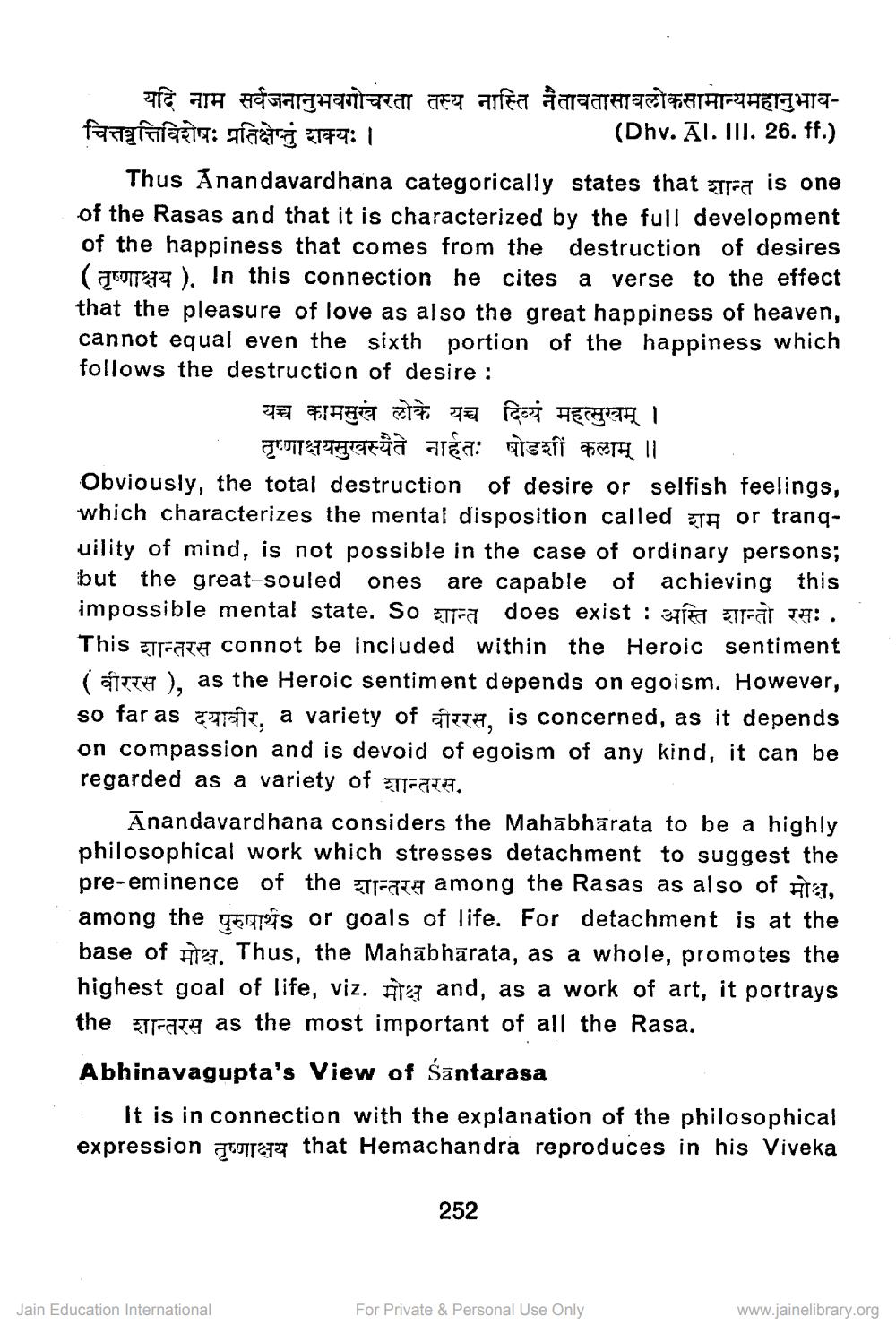________________
यदि नाम सर्वजनानुभवगोचरता तस्य नास्ति नैतावतासावलोकसामान्यमहानुभावचित्तवृत्तिविशेषः प्रतिक्षेप्तुं शक्यः ।
(Dhv. Al. III. 26. ff.) Thus Anandavardhana categorically states that r is one of the Rasas and that it is characterized by the full development of the happiness that comes from the destruction of desires (Bontata ). In this connection he cites a verse to the effect that the pleasure of love as also the great happiness of heaven, cannot equal even the sixth portion of the happiness which follows the destruction of desire
यच्च कामसुख लोके यच्च दिव्यं महत्सुखम् ।
तृष्णाक्षयसुखस्येते नाहतः षोडशी कलाम् ।। Obviously, the total destruction of desire or selfish feelings, which characterizes the mental disposition called TH or tranquility of mind, is not possible in the case of ordinary persons; but the great-souled ones are capable of achieving this impossible mental state. So शान्त does exist : अस्ति शान्तो रसः . This rrath connot be included within the Heroic sentiment ( 174 ), as the Heroic sentiment depends on egoism. However, so far as art, a variety of 17h, is concerned, as it depends on compassion and is devoid of egoism of any kind, it can be regarded as a variety of शान्तरस.
Anandavardhana considers the Mahābhārata to be a highly philosophical work which stresses detachment to suggest the pre-eminence of the math among the Rasas as also of #127, among the years or goals of life. For detachment is at the base of #127. Thus, the Mahābhārata, as a whole, promotes the highest goal of life, viz. HET and, as a work of art, it portrays the rate as the most important of all the Rasa. Abhinavagupta's View of śāntarasa
It is in connection with the explanation of the philosophical expression of that Hemachandra reproduces in his Viveka
252
Jain Education International
For Private & Personal Use Only
www.jainelibrary.org




